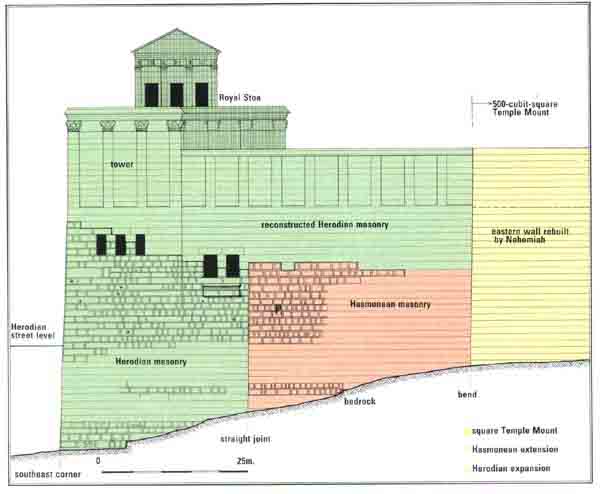Image Details

Leen Ritmeyer
The southern end of the eastern wall. The drawing highlights features from two different building periods: second-century B.C. Hasmonean and first-century B.C. Herodian. Southernmost (leftmost in drawing) are the remains of a Herodian tower, demarcated by a slightly deepening projection of the building blocks as they go up. The drawing shows the tower reconstructed as it probably was. Three windows, now filled in, once opened from about mid-way up the tower. To the right of the tower and slightly below its windows were two entrances that led to storage vaults beneath the Temple platform. Now filled in, the passageway entrances have the appearance on the drawing of a pair of windows. The Herodian southern extension of the eastern wall began just to the right of these passageways. The point where the Herodian extension began is easily visible today as a seam in the masonry wall, usually called the “straight joint.” On the left (southern) side of the straight joint are smooth-bossed Herodian blocks; on the right are rough-bossed Hasmonean blocks (see photograph).
